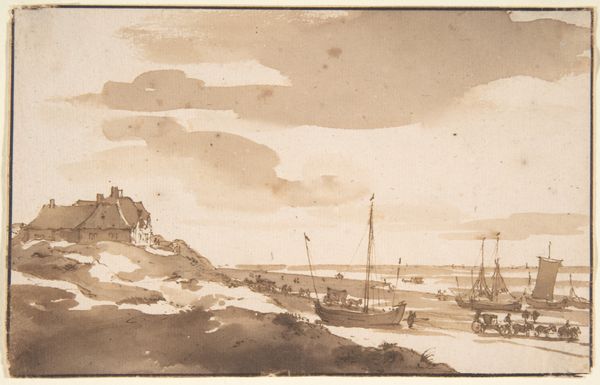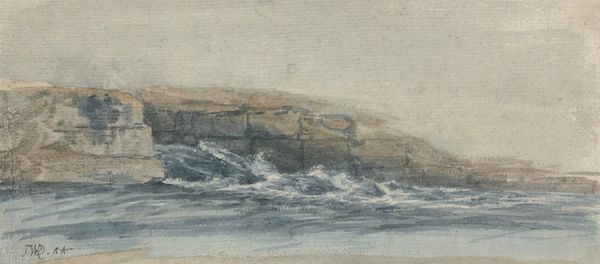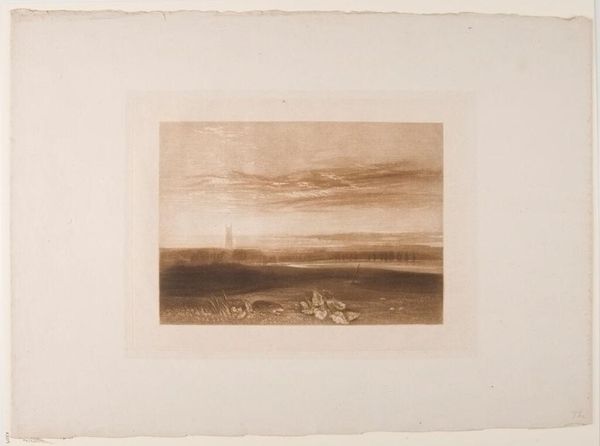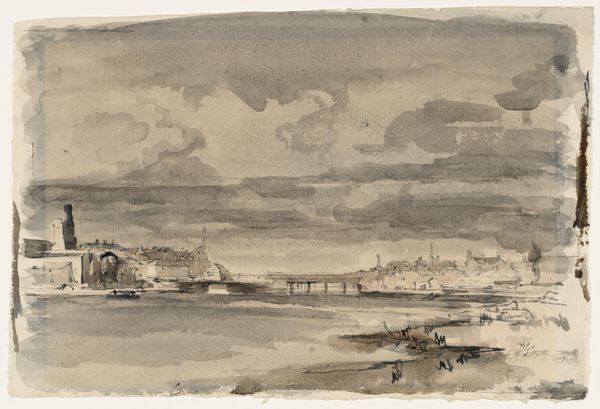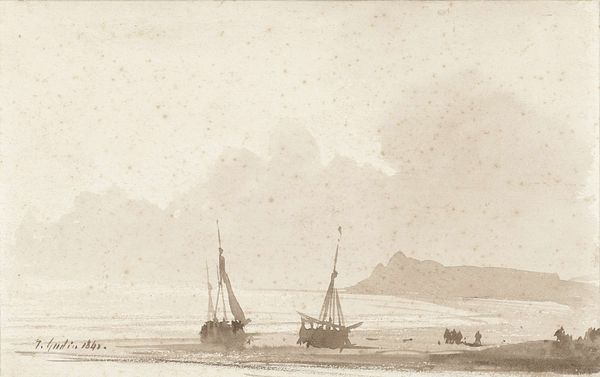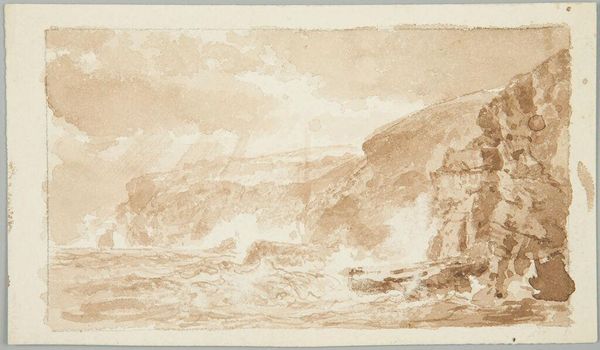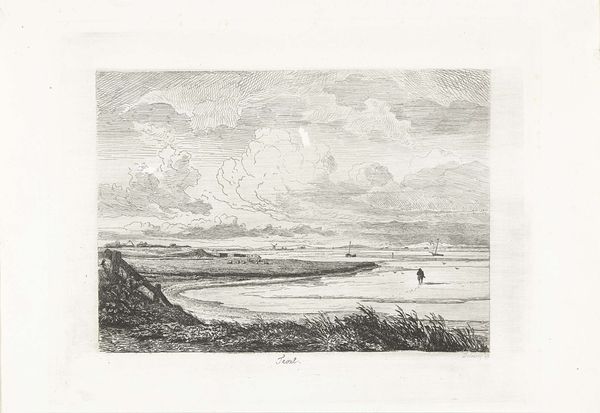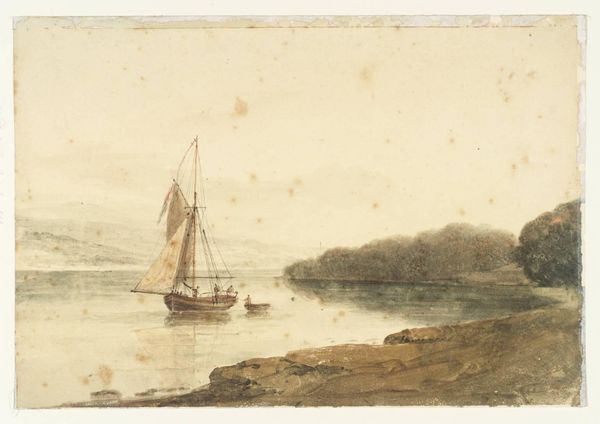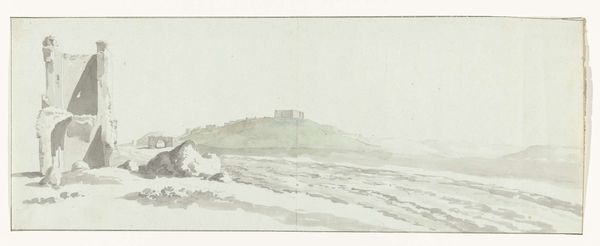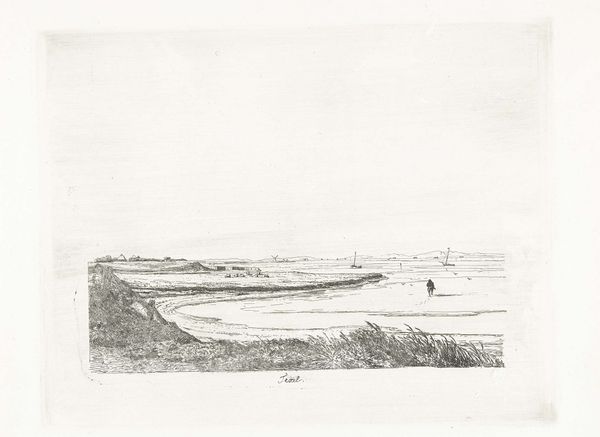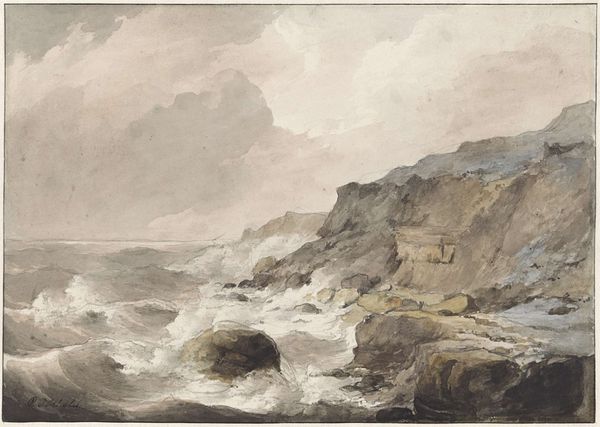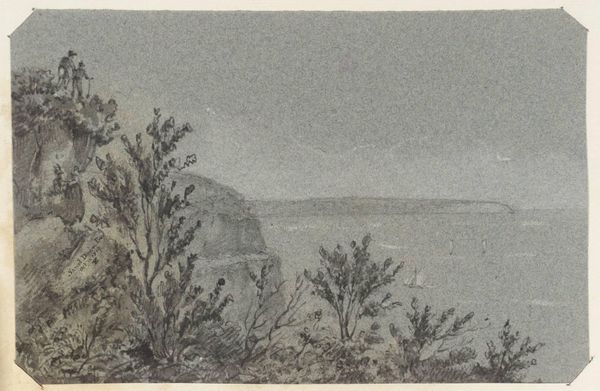
Copyright: CC0 1.0
Editor: This is Peter De Wint’s "Seascape, Coast of Yorkshire," housed at the Harvard Art Museums. It has such a subdued, almost melancholic mood. What sociopolitical context might have informed De Wint’s artistic choices here? Curator: Consider the historical context: early 19th-century England, marked by rapid industrialization and social upheaval. How might De Wint's depiction of the Yorkshire coast, seemingly untouched by industry, function as a commentary on these changes? Is it a celebration of untouched landscapes, or a commentary on their impending loss? Editor: So, the very act of depicting a natural, unaltered scene becomes a political statement in its own way? Curator: Precisely. Think about whose access to these landscapes was privileged and whose labor sustained them. De Wint's choices invite us to consider the complex relationship between art, nature, and social class. Editor: I see what you mean; it is like he's saying something about society through this landscape. Thanks for making it clearer! Curator: My pleasure. Thinking about it this way, we see how landscapes aren’t merely pretty scenes, but can be powerful dialogues about the world around us.
Comments
No comments
Be the first to comment and join the conversation on the ultimate creative platform.
